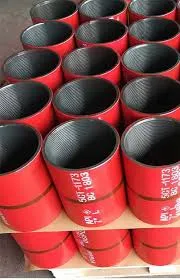- Afrikaans
- Albanian
- Amharic
- Arabic
- Armenian
- Azerbaijani
- Basque
- Belarusian
- Bengali
- Bosnian
- Bulgarian
- Catalan
- Cebuano
- Corsican
- Croatian
- Czech
- Danish
- Dutch
- English
- Esperanto
- Estonian
- Finnish
- French
- Frisian
- Galician
- Georgian
- German
- Greek
- Gujarati
- Haitian Creole
- hausa
- hawaiian
- Hebrew
- Hindi
- Miao
- Hungarian
- Icelandic
- igbo
- Indonesian
- irish
- Italian
- Japanese
- Javanese
- Kannada
- kazakh
- Khmer
- Rwandese
- Korean
- Kurdish
- Kyrgyz
- Lao
- Latin
- Latvian
- Lithuanian
- Luxembourgish
- Macedonian
- Malgashi
- Malay
- Malayalam
- Maltese
- Maori
- Marathi
- Mongolian
- Myanmar
- Nepali
- Norwegian
- Norwegian
- Occitan
- Pashto
- Persian
- Polish
- Portuguese
- Punjabi
- Romanian
- Russian
- Samoan
- Scottish Gaelic
- Serbian
- Sesotho
- Shona
- Sindhi
- Sinhala
- Slovak
- Slovenian
- Somali
- Spanish
- Sundanese
- Swahili
- Swedish
- Tagalog
- Tajik
- Tamil
- Tatar
- Telugu
- Thai
- Turkish
- Turkmen
- Ukrainian
- Urdu
- Uighur
- Uzbek
- Vietnamese
- Welsh
- Bantu
- Yiddish
- Yoruba
- Zulu
Casing and Tubing Connections - Essential Guide for Oil and Gas Industry
Casing and Tubing Connections An Overview
Casing and tubing are crucial components in the oil and gas industry, serving to ensure the integrity and safety of wells. Their connections play a vital role in the overall performance of these systems. This article explores the importance, types, and advancements in casing and tubing connections.
Casing refers to the steel pipe that is placed in the wellbore after drilling to stabilize the well and prevent the walls from collapsing. It also isolates different geological formations to prevent contamination and fluid migration. Tubing, on the other hand, is the pipe through which the oil or gas is produced from the well to the surface. The connections between casing and tubing are essential as they provide a seal that supports well integrity under various pressure conditions.
The types of connections used in casing and tubing can be classified into several categories, including threaded, welded, and slip-on connections. Threaded connections are one of the most common types used, as they allow for easy installation and disassembly. They consist of male and female threads that create a tight fit when screwed together. On the other hand, welded connections provide a strong bond but require more complex equipment and are less common for casing applications.
casing and tubing connections

Another important type is the slip-on connection, which is often used for temporary installations or in situations where ease of replacement is essential. These connections offer the advantage of quick installation but may not provide the same level of pressure resistance as threaded or welded joints.
Recent advancements in technology have led to the development of new connection designs that enhance performance and durability. For example, some manufacturers are now producing premium connection designs that offer better torque strength and resistance to extreme pressure and temperature conditions. These innovations help to minimize risks associated with well failures and maximize production efficiency.
In addition to mechanical performance, the choice of casing and tubing connections also impacts economic factors. Equipment that ensures quicker installation and maintenance significantly reduces downtime, leading to cost savings for operators. Additionally, the ability to withstand harsher environments often means fewer repairs and replacements over the lifespan of the well.
In conclusion, casing and tubing connections are not merely mechanical joints; they are fundamental to the safe and efficient production of oil and gas. Understanding the various types and the technological advancements in connection design is essential for professionals in the industry. As the demand for energy continues to grow, innovations in casing and tubing connections will play a pivotal role in optimizing production and ensuring the integrity of wells worldwide.
-
Tubing Pup Joints: Essential Components for Oil and Gas OperationsNewsJul.10,2025
-
Pup Joints: Essential Components for Reliable Drilling OperationsNewsJul.10,2025
-
Pipe Couplings: Connecting Your World EfficientlyNewsJul.10,2025
-
Mastering Oilfield Operations with Quality Tubing and CasingNewsJul.10,2025
-
High-Quality Casing Couplings for Every NeedNewsJul.10,2025
-
Boost Your Drilling Efficiency with Premium Crossover Tools & Seating NipplesNewsJul.10,2025







